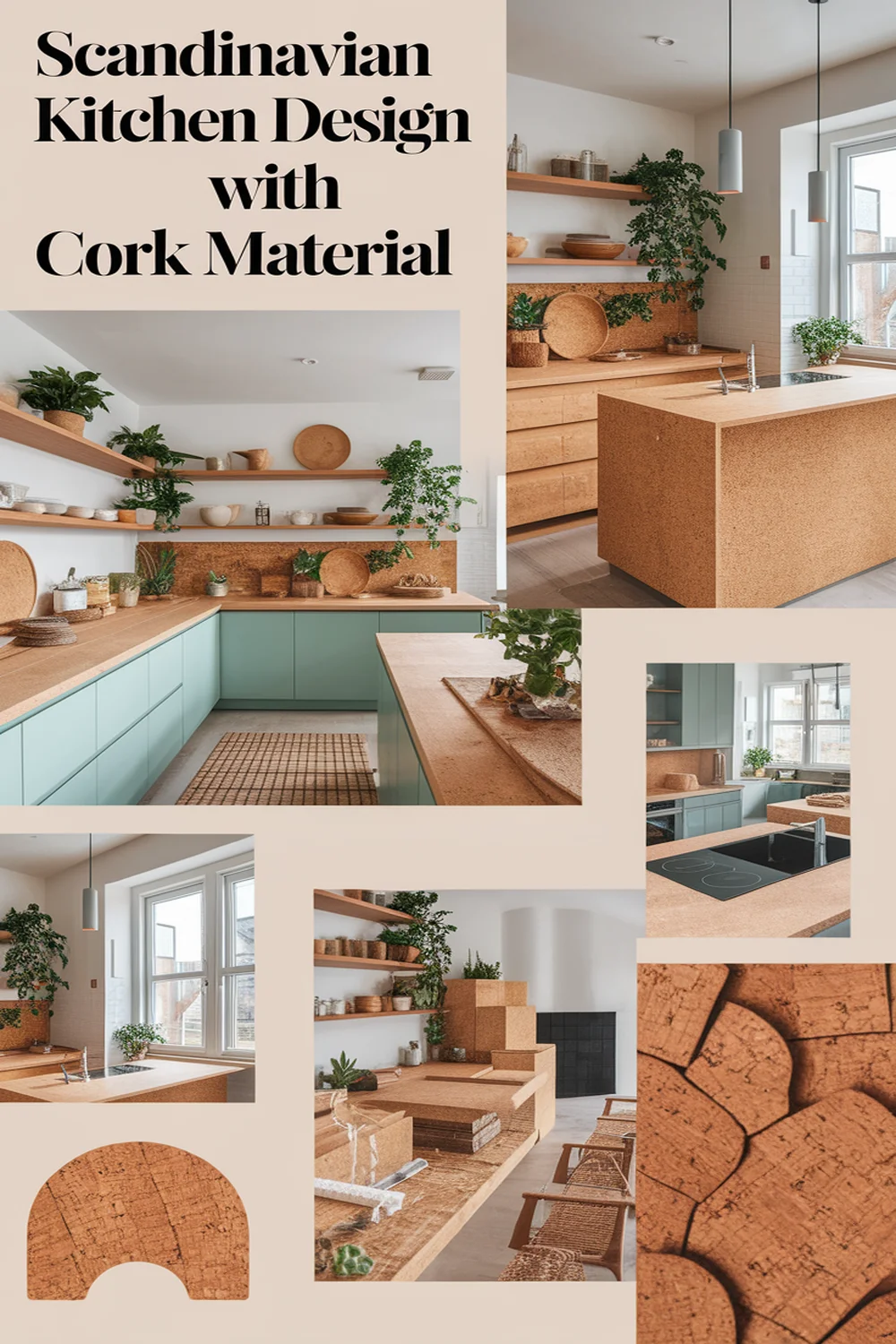This post may contain affiliate links. Please read our policy page.
When designing a Scandinavian kitchen with cork, I embrace the essence of simplicity and functionality. Cork’s natural warmth and stylish appeal create a cozy atmosphere, while its water-resistant properties make it perfect for countertops and cabinets. I love incorporating cork panels and subtle accents to enhance the kitchen’s minimalistic beauty. The unique textures and eco-friendly qualities add a touch of modern elegance. If you’re curious about how to elevate your space with more innovative ideas, there’s much more to explore.
The Essence of Scandinavian Design
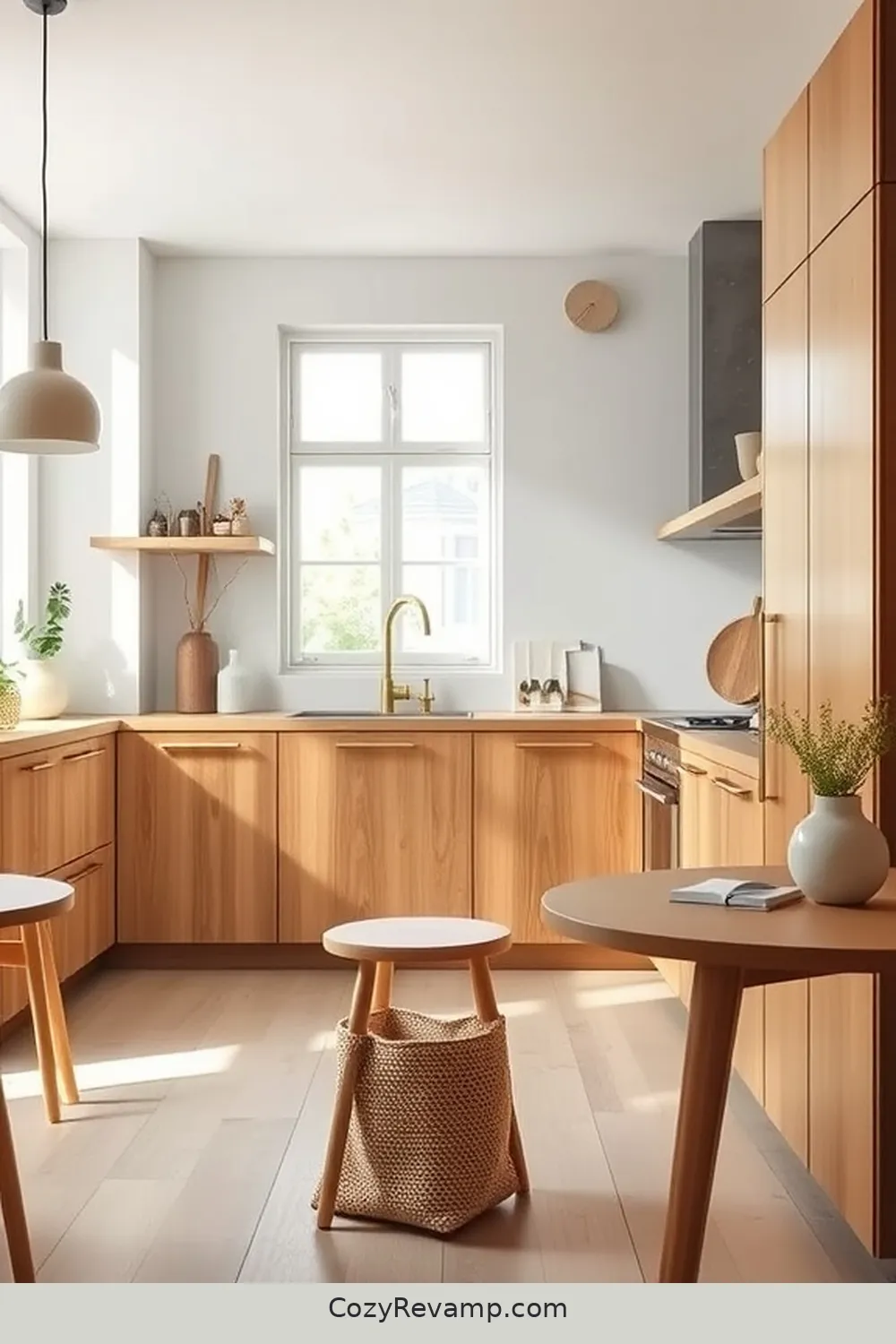
When I think of Scandinavian design, I immediately envision a harmonious blend of simplicity and functionality that’s both inviting and elegant. The aesthetic captivates me with its clean lines, muted colors, and natural materials that breathe life into any space.
Each element feels intentional, creating a serene atmosphere that promotes well-being. I can’t help but admire how Scandinavian kitchens embrace minimalism while maximizing storage and efficiency, making them as practical as they’re beautiful.
The use of light wood, ceramic details, and soft textiles evokes a sense of warmth, inviting family and friends to gather. This design philosophy, rooted in nature and craftsmanship, inspires me to create spaces that aren’t only stylish but also comforting and livable.
Recommended Items
Here are our recommended products and equipment to install—feel free to explore!
Benefits of Using Cork in Kitchen Design
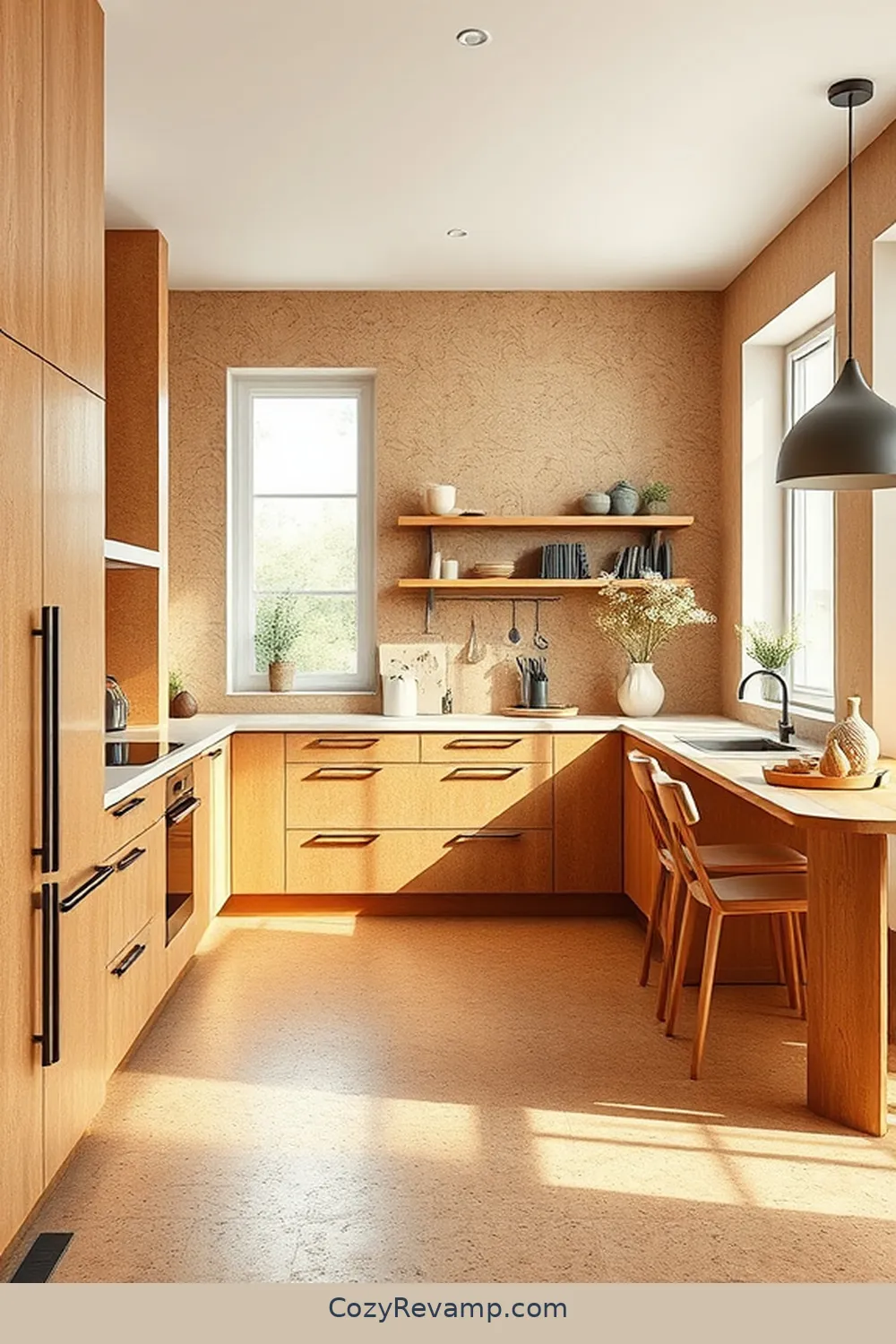
Although some might overlook cork as a kitchen material, I find its unique qualities truly enchanting. Its natural warmth creates an inviting atmosphere, seamlessly blending with the minimalist Scandinavian aesthetic.
Cork isn’t only stylish but also incredibly functional; it’s water-resistant, making it ideal for kitchen surfaces where spills are common. Plus, its sound-absorbing properties reduce noise, allowing for a peaceful cooking experience.
I love how cork’s eco-friendly nature aligns with a sustainable lifestyle, adding a layer of responsibility to my design choices. Its versatility means it can be used in cabinets, flooring, or even decorative accents, bringing texture and depth.
With cork, I’m not just designing a kitchen; I’m creating a cozy, modern sanctuary.
Cork Countertops: A Stylish and Practical Choice
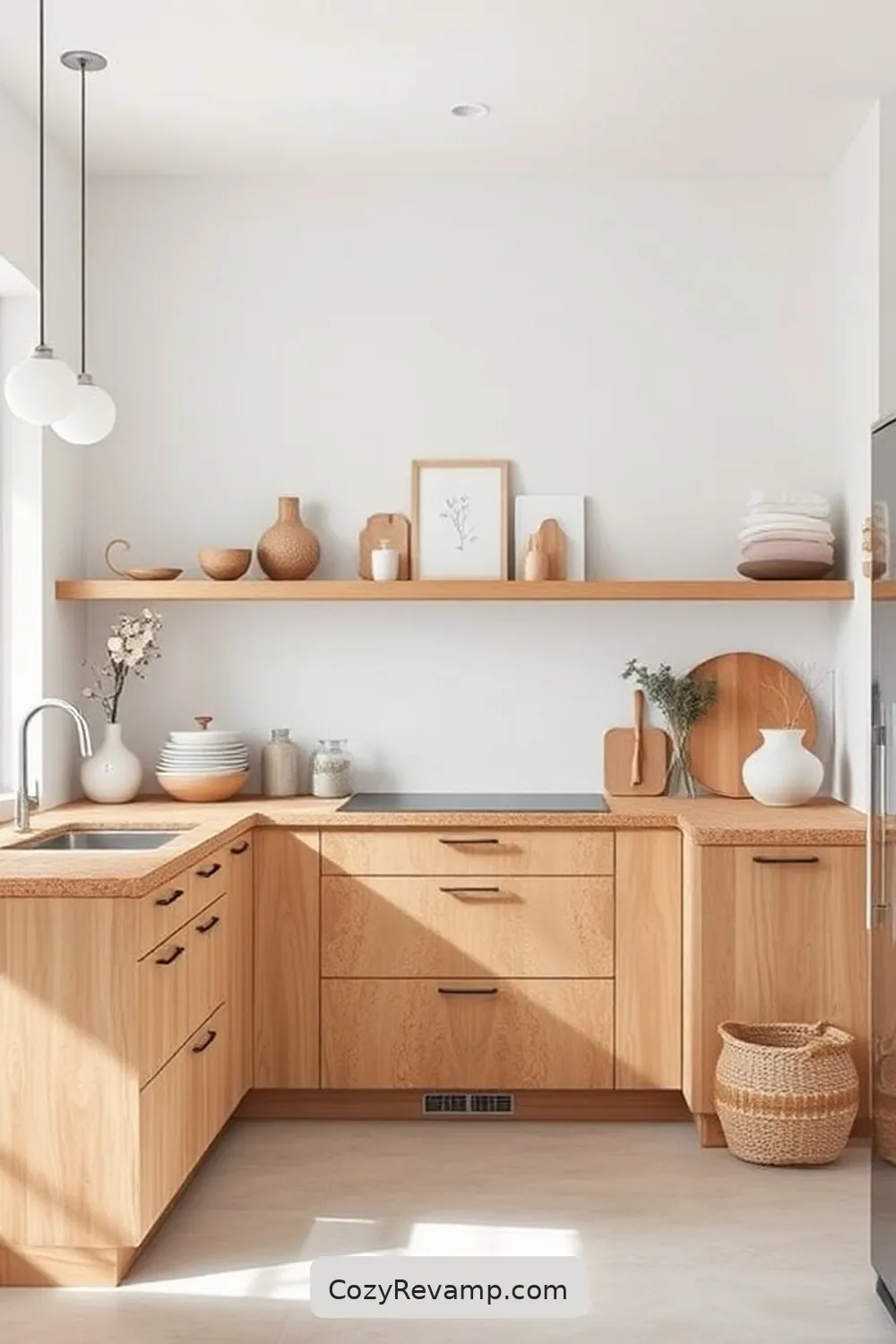
Cork countertops elevate the kitchen experience with their blend of style and practicality. I love how they add warmth and texture, creating a cozy atmosphere that feels inviting and modern. The natural grain patterns are unique, making each countertop a stunning centerpiece.
Plus, cork is incredibly versatile, complementing minimalist Scandinavian designs effortlessly.
When it comes to functionality, cork’s resilience is impressive; it’s naturally resistant to moisture and bacteria, making it perfect for food prep. I appreciate how easy it’s to maintain—just a simple wipe with a damp cloth keeps it looking fresh.
With the added bonus of being eco-friendly, cork truly checks all the boxes for a stylish and sustainable kitchen upgrade.
Incorporating Cork Into Kitchen Cabinets

While exploring ways to enhance your kitchen’s aesthetic, incorporating cork into your cabinets can create a striking visual impact.
The warm tones and unique textures of cork elevate a Scandinavian design, adding a natural touch that feels both modern and inviting.
Here are three ways to incorporate cork into your kitchen cabinets:
- Cork Panels: Use cork sheets as cabinet fronts for a contemporary look, giving your kitchen a soft, organic feel.
- Cork Accents: Consider cork handles or knobs to add subtle texture while maintaining a sleek appearance.
- Open Shelving: Incorporate cork-lined open shelves, showcasing your favorite dishes and creating an engaging focal point.
These elements can transform your kitchen into a stylish haven, blending functionality with beautiful aesthetics.
Cork Flooring: Comfort and Durability
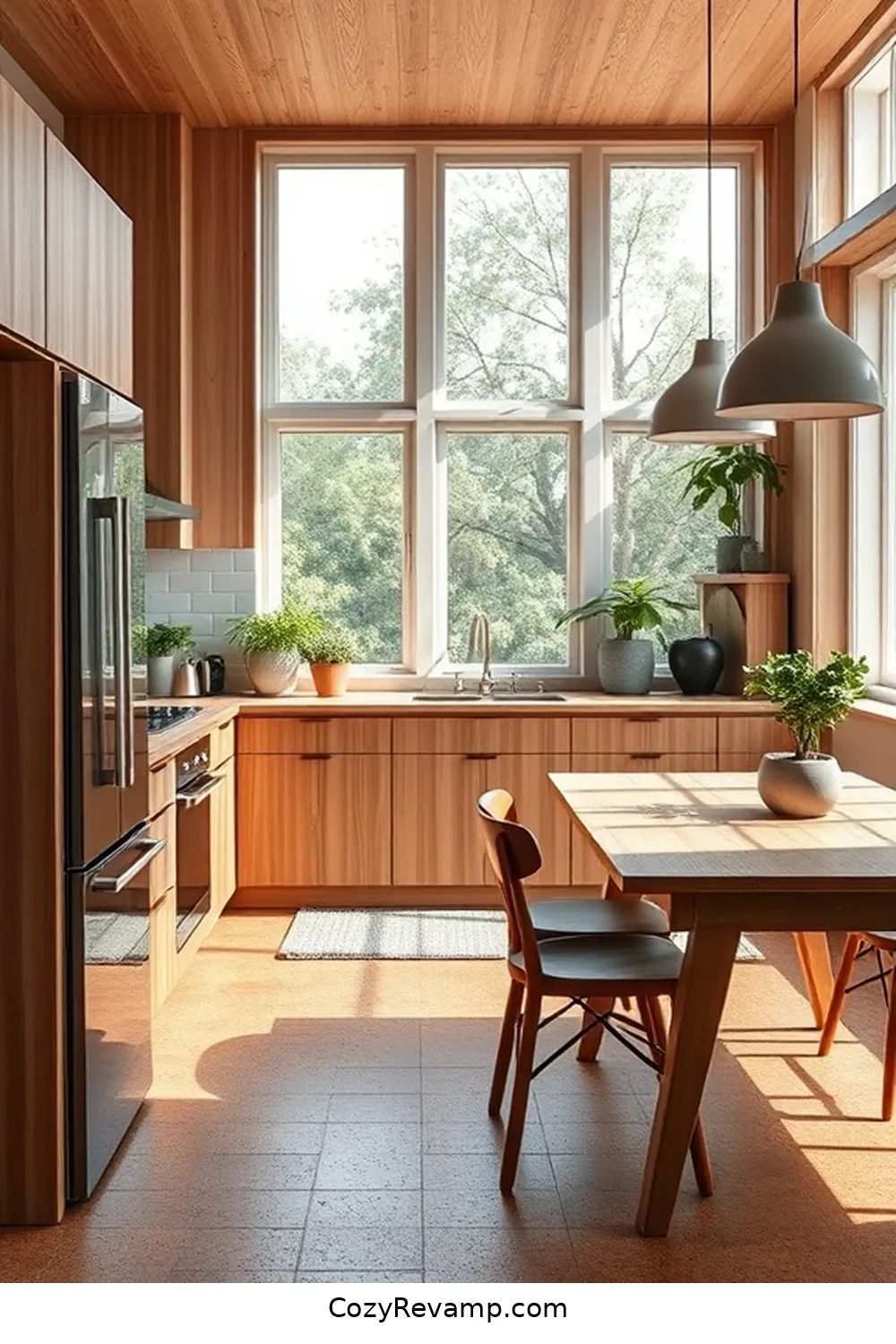
When I think about flooring options that perfectly blend comfort and durability, cork always stands out. Its unique texture feels soft underfoot, making each step a pleasure, especially during those busy mornings in the kitchen.
Cork flooring combines comfort and durability, offering a soft, inviting surface that enhances busy mornings in the kitchen.
I love how cork’s natural warmth invites an inviting atmosphere, complementing the Scandinavian aesthetic effortlessly. Plus, it’s incredibly resilient—resisting scratches and dents while maintaining its beauty over time.
The variety of colors and finishes means I can easily find a shade that harmonizes with my cabinetry and countertops. Knowing that cork is eco-friendly just adds to its charm.
With cork flooring, I feel like I’m not just making a stylish choice, but also a sustainable one that enhances my kitchen’s overall design.
Task Overview for Your Scandinavian Kitchen
Accessorizing With Cork: Small Touches That Make a Difference
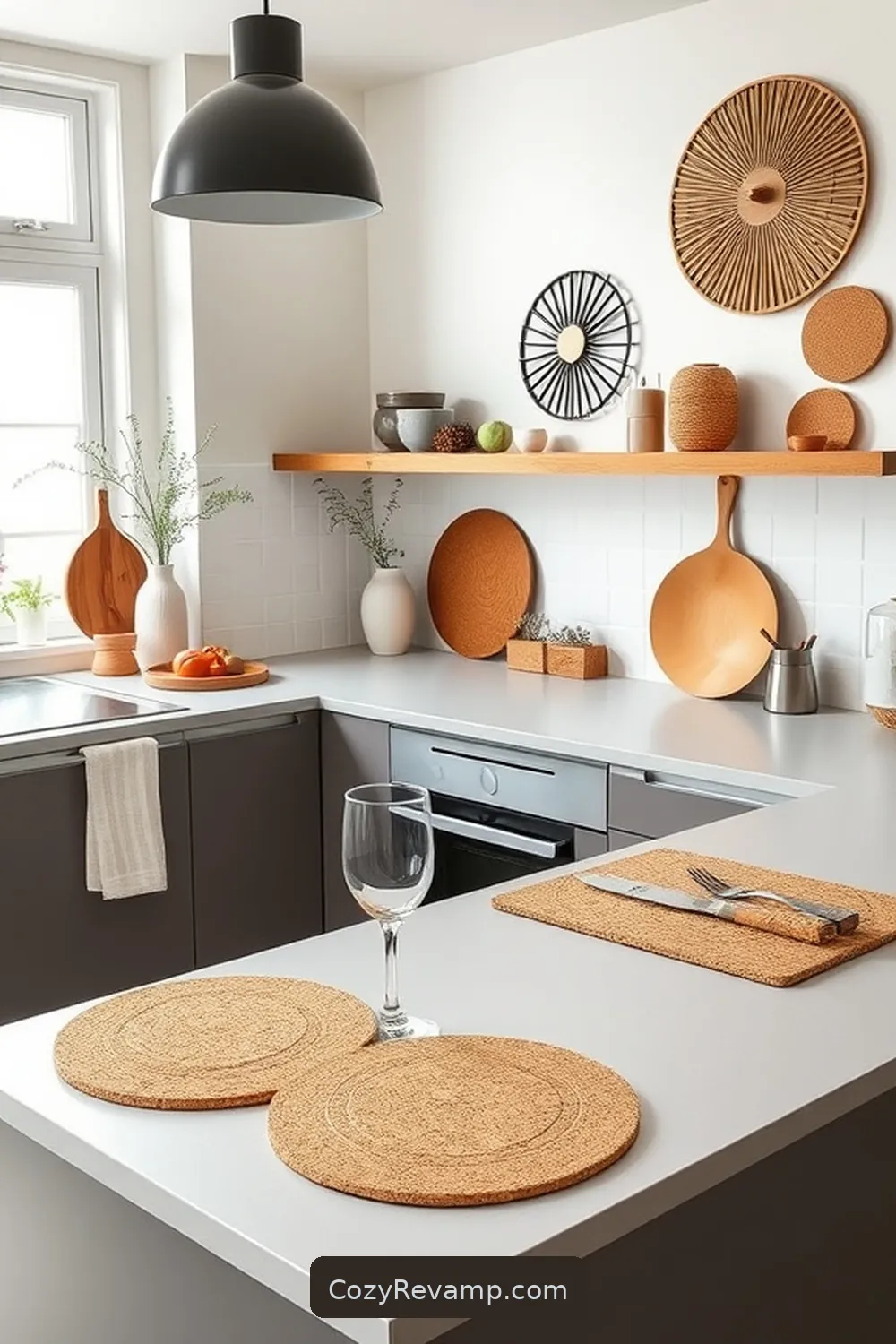
A touch of cork can effortlessly elevate your kitchen’s aesthetic, transforming it into a cozy Scandinavian haven.
I love incorporating cork accessories that not only serve a purpose but add warmth and texture to the space. Here are three ideas that make a real difference:
- Cork Coasters: These aren’t just practical; their natural look complements wooden surfaces beautifully.
- Cork Wall Art: A cork bulletin board or decorative pieces add an organic element and can be customized to your style.
- Cork Utensil Holders: Practical yet chic, these holders bring a touch of rustic charm while keeping your kitchen organized.
Color Palettes and Textures to Complement Cork
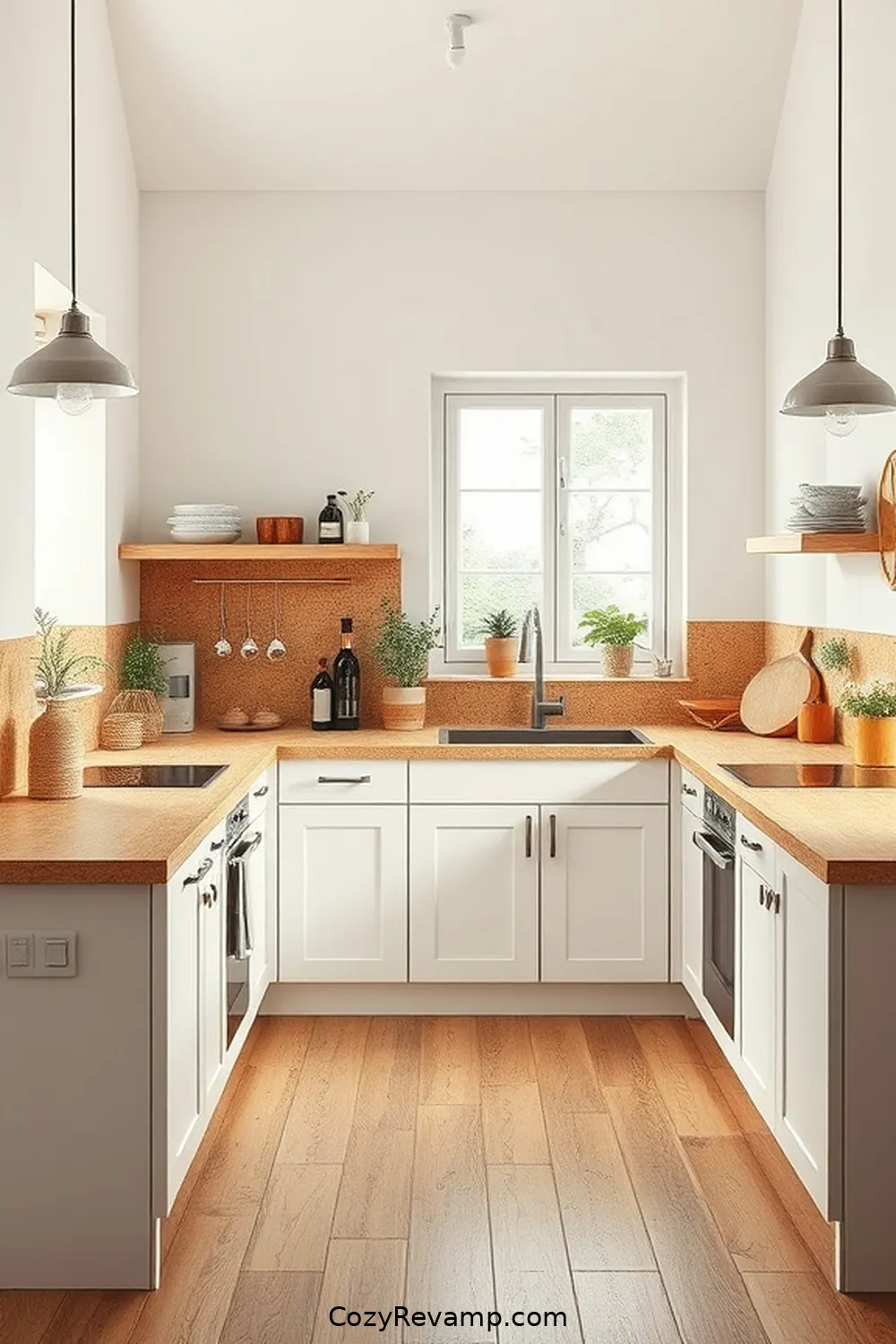
To create a harmonious Scandinavian kitchen that beautifully complements cork accents, I often turn to soft, muted color palettes infused with natural textures.
Think gentle whites, pale grays, and earthy beiges that allow cork’s warmth to shine through. I love pairing these hues with textured elements like linen or wool for curtains and table runners, which add depth without overwhelming the space.
Incorporating light wood tones, like ash or birch, can enhance the organic feel and create a seamless flow. You might also consider subtle pops of color—perhaps a soft sage green or a muted blush—that can bring a fresh touch without clashing.
Together, these choices create a serene and inviting atmosphere that truly celebrates the beauty of cork.
Maintaining Cork in a Scandinavian Kitchen
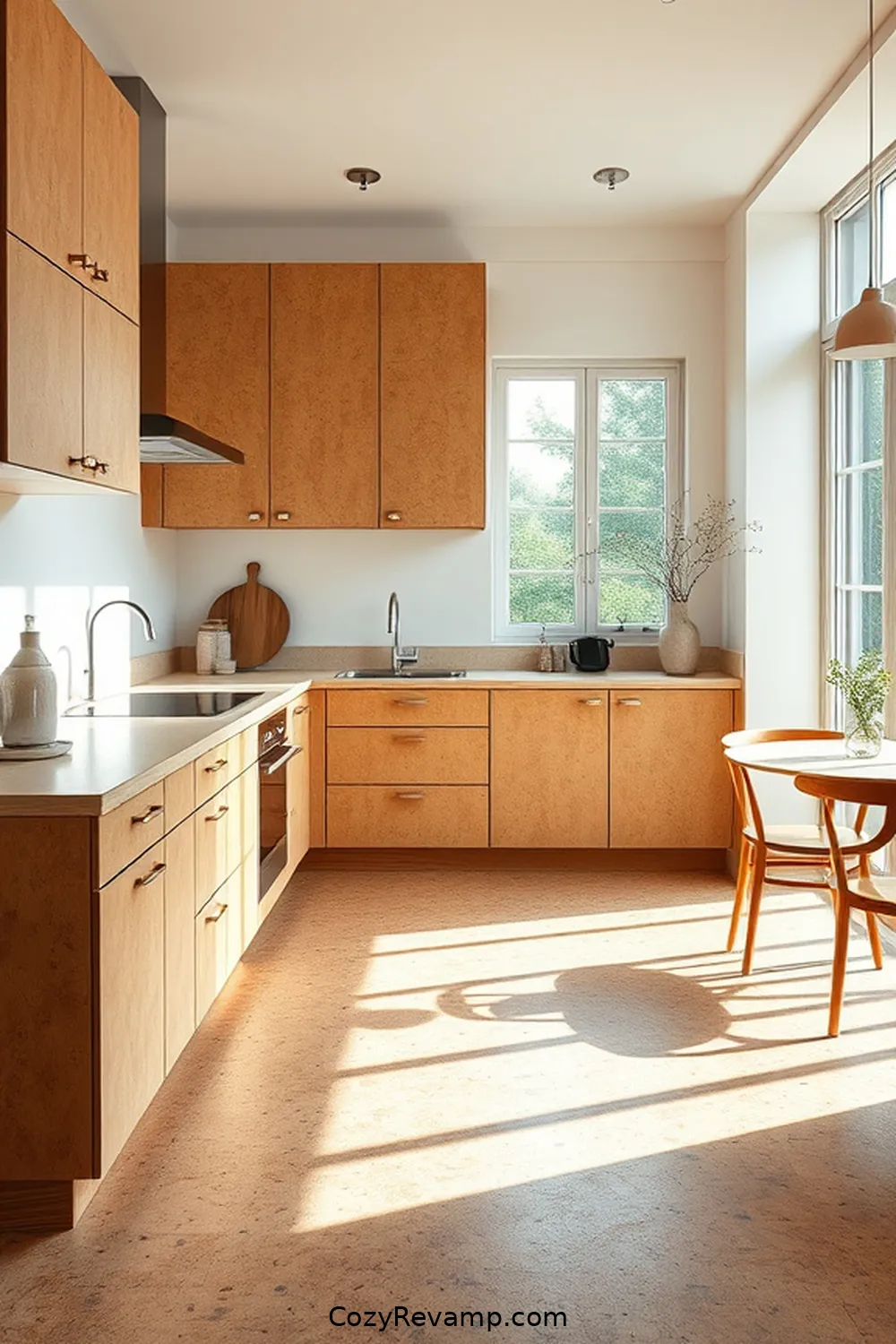
While maintaining cork in a Scandinavian kitchen might seem challenging, it’s quite manageable with a few simple practices.
I’ve found that by incorporating these tips, I can keep the warmth and beauty of cork intact.
- Regular Cleaning: Just wipe it down with a damp cloth and mild soap to remove stains and spills. Avoid harsh chemicals.
- Sealing: Every few years, I apply a natural cork sealer to protect against moisture and enhance its natural luster.
- Avoid Direct Heat: I make sure to keep hot pots and pans away from cork surfaces to prevent damage.
Real-Life Examples of Cork in Scandinavian Kitchens

Cork has become an essential element in many Scandinavian kitchens, seamlessly blending functionality with aesthetic appeal.
I recently visited a stunning kitchen where cork cabinetry added warmth and texture, creating a cozy yet modern vibe. The homeowners chose cork flooring, which not only feels soft underfoot but also reduces noise, making the space inviting.
I also spotted cork accents in the form of stylish drawer pulls and a chic cork backsplash that elevated the overall design. These elements showcased how versatile cork can be, enhancing both beauty and practicality.
When I envision my dream kitchen, I see cork as a key material, harmonizing with light woods and minimalist decor, embodying the true spirit of Scandinavian design.

